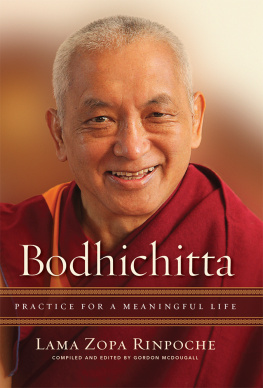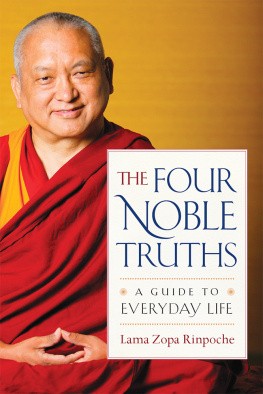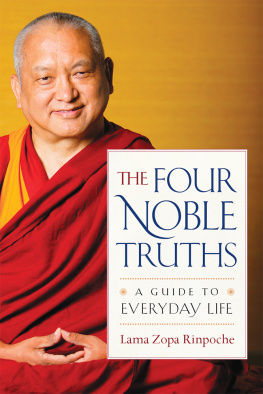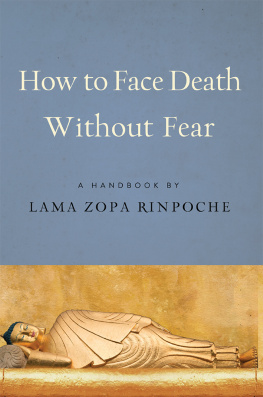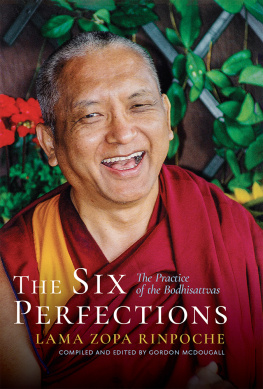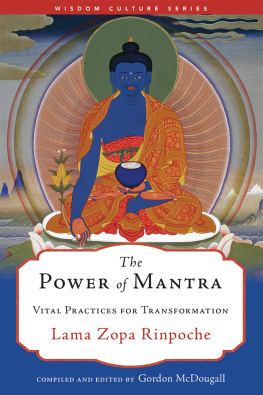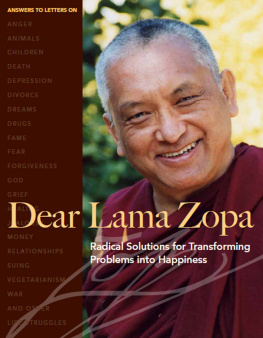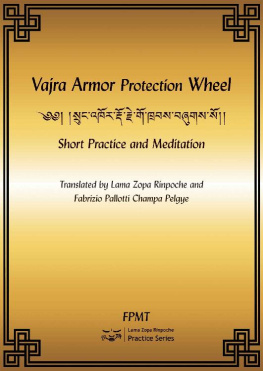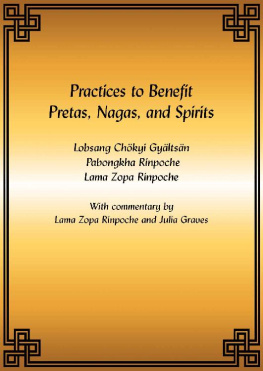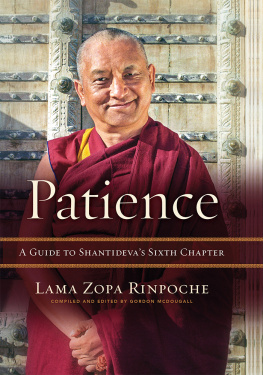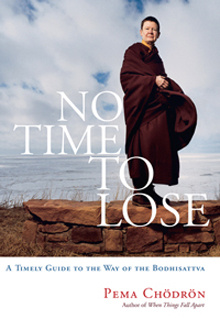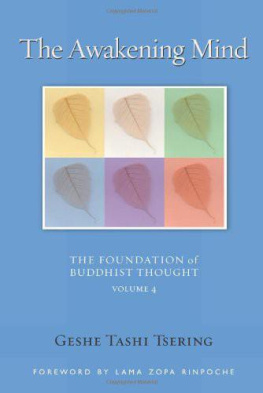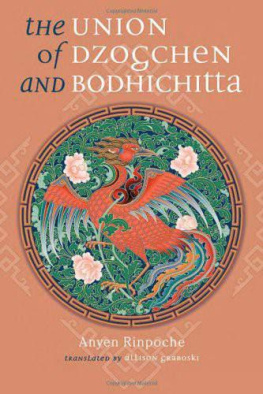APPENDIX 1: THE EQUANIMITY MEDITATION
This meditation comes from Lama Zopas Kopan Course No. 5, delivered at Kopan Monastery in Nepal, November 1973. https://www.lamayeshe.com/article/chapter/kopan-course-no-5-index-page.
Do the visualization like this.
Think of a present friend, enemy, and stranger: three people discriminated by your mind. Visualize the person you dont like, who disturbs you, in front of you on your left. Visualize the friend you are attached to in front of you on your right. Visualize the stranger in between these two.
Then visualize, surrounding you, all the other infinite sentient beings: your parents, the hell beings, the hungry ghosts, the animals, the humans, the demigods, the gods, and the intermediate-state beings. You should visualize all sentient beings in human form, because when we lead them all in refuge prayers, it will be difficult to imagine bugs, frogs, and so forth saying the prayers. Do whichever is most effective for your mind; the whole point is to subdue your mind.
If you have difficulty finding a specific enemy, try thinking of somebody who gives you problems such as somebody who makes you angry through rudeness, lying, or abusing you in some way. Perhaps somebody has accused you of being foolish or jealous something like that. For a friend, it can be one of your parents, a relation, a person you are attached to, or somebody who is attached to you. The stranger is somebody you have neither attachment to nor aversion for.
If you dont have some specific person you are attached to, then try to have some feeling by visualizing that person giving you what you want. If you like getting presents, imagine them giving you a wonderful present; if you are attached to praise, imagine them praising you, and so forth. Imagine the friend giving you whatever makes you happy.
Then think of the feelings that arise when you look at these three people. When you look at the enemy, a feeling of dislike arises; when you look at the friend, a feeling of attachment arises; when you look at the stranger, a neutral feeling arises, neither dislike nor attachment.
When you have a clear visualization of these three beings among all other sentient beings and the feelings that arise because of these three, think like this: If you do something that the friend doesnt like or if they do something you dont like, they become your enemy. If you do something that the enemy likes or they do something you like, they become your friend. As these two have changed in the past according to the conditions, so they will change in the future. The friend is not the true friend; the enemy is not the true enemy. It is the same with the stranger. They are a stranger at the present, but according to changing conditions they can become either an enemy or a friend. The stranger has sometimes been a friend and sometimes an enemy in the past, and this will be the same in the future. Even the stranger is not a definite stranger.
Therefore there is no reason to react as if these three are permanent to label one as definite friend, one as definite enemy, one as definite stranger due to temporary conditions: what the friend does, what the enemy does, and what the stranger does. Think that in a little time all these things will change friend will become enemy, then stranger, and so forth. Think of your parents and your partner, how your relationships with them have changed over your life and will continue changing. This is true of your friend. At the moment they have this status in your mind, but they have been continually changing and will continually change.
Think of this present friend, parents, and so forth those you are currently attached to.
Think: This friend has been my enemy numberless times in my previous lives. They have been my enemy by disturbing me in many different ways. Their being my enemy has no beginning; there is no time I can think before which they were not an enemy.
Think on this clearly and deeply, and check what feeling comes into your mind.
Think: As my present enemy kills me, disturbs me, or harms me in some way, in the same way, this present friend has harmed me in my previous lives countless times.
Thinking back on the harm this person has done in numberless previous lives, check what effect it has on your mind, what feeling you have for them at this moment.
Think: This friend I am now attached to will continually change in the future, will again become my enemy, continually harming me in my numberless future lives.
Thinking this, also check what effect it has on your mind, what feeling you have at this moment. If there is a lessening of attachment, your analysis has been accurate; if not, then you need to work on this aspect more.
Now, in the same way, check with the present enemy.
Think: This enemy has been my friend numberless times in my previous lives. They made me happy by giving me things, by praising me, and so forth. Just as my present friend makes me happy, so has my present enemy countless times in numberless previous lives.
Imagine many, many previous lives where your current enemy has been your best friend and has been incredibly kind to you, and check what feeling comes to mind.
Think: This enemy I now dislike will continually change in the future and will again become my friend, making me happy in my numberless future lives.
Thinking this, also check what effect it has on your mind, what feeling you have at this moment. If there is a lessening of dislike and anger, your analysis has been accurate; if not, then you need to work on this aspect more.
Now, in the same way, check with the present stranger.
Think: At the present this person is a stranger, but they have been my friend and enemy in my previous lives, and they will be my friend and enemy in the future.
Imagine many past lives in which the stranger was your friend and many past lives in which they were your enemy. Then imagine many future lives in which the stranger becomes your friend and many in which they become your enemy.

